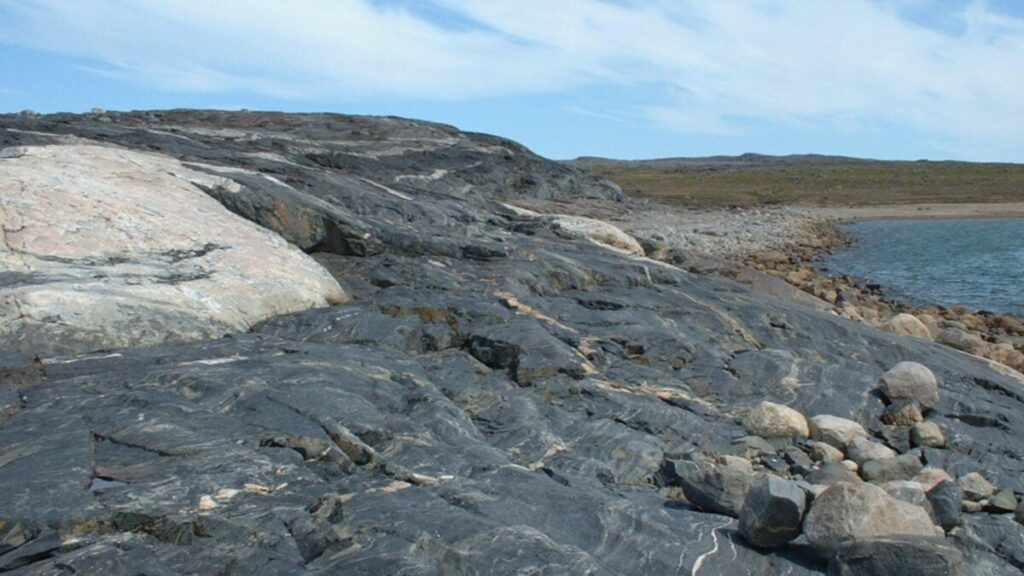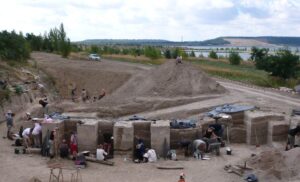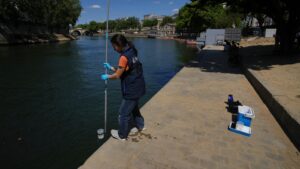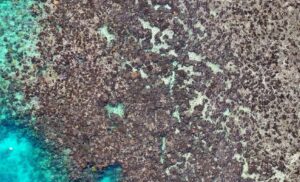
Due to the relentless movement of Earth’s tectonic plates, our planet’s crust is in a constant state of recycling. This geological activity makes rocks and minerals from the planet’s formative years exceedingly rare. For geologists, this scarcity presents a significant challenge, as surface-level Hadean rocks—those older than 4.03 billion years—could offer profound insights into the early geological stages of Earth’s 4.5-billion-year history.
In a groundbreaking study published today in the journal Early Earth, researchers from Canada and France propose that the Nuvvuagittuq Greenstone Belt (NGB), a rock formation located in northeastern Canada, might contain Hadean rocks dating back approximately 4.16 billion years. Although this date differs from previous controversial research that suggested NGB rocks could be as old as 4.3 billion years, it strengthens the broader theory that this formation hosts remnants of Earth’s earliest crust. If validated, these findings could have substantial implications for our understanding of the planet’s ancient history.
Unraveling Earth’s Ancient Past
“Many questions remain regarding Earth’s earliest crust owing to the rarity of Hadean (>4.03 billion-year-old) rocks and minerals,” the researchers, including Jonathan O’Neil from the University of Ottawa’s Department of Earth and Environmental Sciences, explained in the study. “The Nuvvuagittuq Greenstone Belt (NGB) in Canada may be the only known remnant of Hadean crust, although its age is debated, ranging from ≥3.75 to 4.3 billion years old.”
One of the primary methods used to date rocks is radiometric dating, which involves measuring the radioactive decay of isotopes—different versions of elements. The claim that some NGB rocks might be up to 4.3 billion years old has sparked controversy, as some researchers argue that the isotopic data supporting this estimate may actually result from “later geological mixing processes” rather than representing the rock’s true age, according to a statement from the American Association for the Advancement of Science.
New Insights from Metagabbroic Intrusions
In their latest study, O’Neil and his colleagues focused on ancient rocks in the NGB known as metagabbroic intrusions. These intrusions disrupt older basaltic rocks, a feature that allowed the researchers to employ various isotopic analyses to determine a lower age limit for this older material. Specifically, data involving the decay of samarium isotopes into neodymium isotopes consistently indicated a minimum age of 4.16 billion years.
The discovery of these ancient rocks in Canada is not just a matter of academic interest. It represents a crucial piece of the puzzle in understanding the early conditions of our planet. As researchers continue to debate the true age of the NGB, this study underscores the importance of critically evaluating dating methods, particularly those that could have significant historical implications for both humanity and our planet.
Implications for Geological Research
This development follows recent research on prehistoric footprints, which also faced scrutiny due to its dating techniques. Both studies highlight the necessity for rigorous examination of the methodologies used in dating geological and archaeological findings, especially when such findings could reshape our understanding of Earth’s history.
As scientists strive to piece together the story of our planet’s past, the Nuvvuagittuq Greenstone Belt stands as a testament to the enduring quest for knowledge. Whether the question of its true age will ever be conclusively settled remains to be seen, but the ongoing research continues to push the boundaries of what we know about Earth’s earliest days.
Looking ahead, further studies and technological advancements in dating techniques may provide more clarity on the NGB’s age and composition. Until then, the scientific community remains engaged in a lively debate, driven by the promise of unlocking the secrets held within these ancient rocks.






